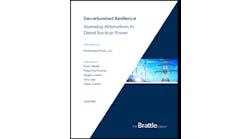As the data center and Cloud services industries continue to evolve at a dizzying pace, so too are the business models and investment strategies of industry stakeholders. Seeing tremendous windows of opportunity open up through technological innovation and the changing needs of end users, many new players have been quick to jump in.
“The Cloud market is evolving quite rapidly with numerous new market entrants” states Shay Houser, CEO of Green Cloud Technologies and featured speaker at IMN’s upcoming Data Center & Cloud Services Infrastructure Forum in Washington D.C.. “The media continues to focus on the “big 3” while many of us are quietly building great businesses.”
Much of the recent growth has been within the Cloud Service Provider (CSP) market and will remain so for the foreseeable future according to various industry commentators.
“Cloud-based services have been taking a growing share of the data center services market for the last 5 years” states Tami Fratis the CEO of IPR International. “This trend will continue through the next 5 years until the major cycle of insourcing/outsourcing swings back in favor of insourcing.”
With industry growth showing no sign of slowing down, it’s no surprise that it’s attracting the attention of more and more investors.
“There is increased interest in the CSP space and there are a number of private equity investors looking to back various Cloud strategies” comments Houser. “The market is massive so the money is coming. All stages and levels of capital are available to growing CSP’s”.
Mark Solovy a Managing Director within the Technology Finance Group at Monroe Capital has also been watching the trend. “Credit funds have been very aggressive in financing data centers and even more so in Cloud-services that have a recurring revenue component” he comments. “This has powered M&A activities and resulted in substantial growth and investment in the sector.”
The record-breaking M&A activity is set to continue. As Hunter Newby of Newby Ventures states: “This is only the beginning. More value is to be created than has been created.”
[clickToTweet tweet=”The record-breaking M&A activity in the data center market is set to continue” quote=”The record-breaking M&A activity in the data center market is set to continue”]
“We haven’t even begun to see the M&A activity in the Cloud space that we anticipate over the coming decade” comments Houser. “The M&A has been focused primarily around the data center space but that will change over the coming years as CSPs grow and consolidate. The CSP space is in its infancy and we expect hundreds of providers over the coming years.”
Not all market-watchers are optimistic about market direction, however.
“We have a concern over where the market is heading as public Cloud seems to be continuing to grab more market share which reduces the need for on premise and private Cloud solutions” comments Solovy. “The reduction in private Cloud and on premise spending, may reduce the need for data centers owned and built by players who are not focused on the public Cloud space. As groups like Amazon continue to win market share, the ownership of data centers may continue to become consolidated as smaller/non-public Cloud players will find a smaller market for their business.”
Innovation is key according to Tami Fratis: “Consolidation is becoming mandatory for companies that don’t have a unique answer to the Cloud or that have ‘me-too’ solutions to put customers in the Cloud. They then have to compete on price and it becomes a race to the bottom.”
So, what does this mean for growth opportunities for data centers? They are limited according to Fratis: “The only growth for traditional data centers lies in scale. Only large installations that lower total overall cost for larger customers will see more than token growth.” However, “data center companies that produce an innovative Cloud-based solution will be able to compete effectively with Cloud-only solutions.”
In producing new products and services, data centers need to be fully in sync with the wants and needs of the end-consumer and their behaviors. This is obviously easier said than done. However, those who accurately predict the use case for enterprise end-users and retail consumers will be the ultimate winners. And there are investors eager to back such industry players….
Data Center Frontier Special Report: The Northern Virginia Data Center Market. Download it now.
“Currently, there is a lot of dollar sitting on the sidelines in private equity funds that needs to be put to work” states Monroe Capital’s Solovy. “In addition, credit funds are also providing debt on fairly flexible terms and at historically low rates.”
Seize the Evolving Data Center Industry
“Given the cyclicality of the capital markets, this is likely to change in the next 3-5 years at least for a period of time. This may have a material change on valuations and how data centers are capitalized” adds Solovy.
So how can traditional data centers seize the day, or, rather, tap into the current dry powder? What are the investment strategies now being favored by data centers, CSPs and investors alike? How are changes in end-consumer behavior and technology driving the future of data centers and long term investment strategies?
To find answers to these critical questions either polish off your crystal ball or join industry heads as they convene in Washington D.C. on June 8-9 at IMN’s Provider Forum on Data Centers & Cloud Services Infrastructure.
The individuals in this article will be featuring on various panels at the forum on June 8-9. To hear them speak, network with industry leaders, and enjoy ample deal making opportunities, register online at www.imn.org/dceast17.





